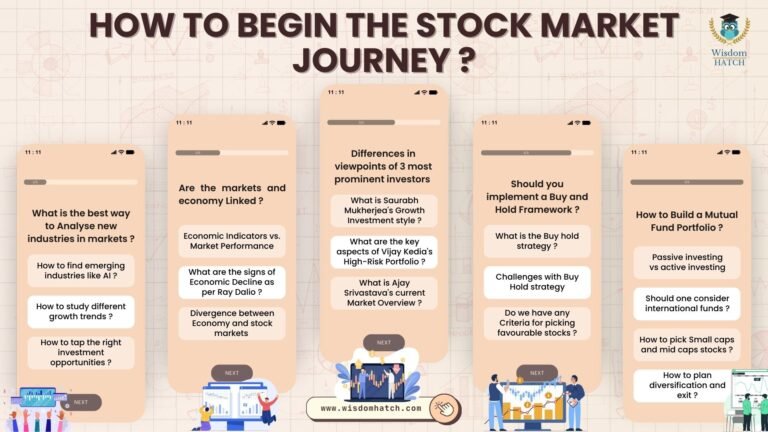Tips for Investing in Stocks with Minimal Funds

Anúncios
Investing in the stock market is frequently regarded as an arena exclusively for the affluent; however, this notion is a misconception.
Even with limited funds, it is possible to develop a robust investment strategy that facilitates financial growth.
This guide provides an overview of the fundamentals of stock trading, effective strategies for constructing a diversified portfolio, and the significance of risk management.
Within this resource, you will discover practical advice for optimizing returns while maintaining a long-term perspective. Whether you are a novice or seeking to enhance your existing approach, this guide offers valuable insights for maximizing the potential of your modest investments.
Anúncios
Why Invest with Minimal Funds?
Investing with minimal funds can serve as a strategic approach to wealth building, allowing individuals to participate in the stock market without the necessity of substantial capital.
By concentrating on affordable stocks, index funds, and low-cost investment options, those with limited resources can establish a diverse investment portfolio that aligns with their financial objectives and risk management strategies.
This approach lays the foundation for long-term financial independence and enhances financial literacy.
Understanding the Stock Market
The stock market functions as a platform for the buying and selling of shares from publicly traded companies, reflecting economic indicators and market trends that significantly impact stock performance.
A comprehensive understanding of the dynamics of stocks and the various factors that drive market behavior is imperative for developing a robust investment strategy. This knowledge enables investors to make informed decisions that optimize their return on investment (ROI).
Basics of Stock Trading
Stock trading encompasses the buying and selling of company shares through brokerage accounts, offering investors the opportunity to engage in financial markets and potentially build wealth.
A comprehensive understanding of the fundamentals of stock trading, including stock selection, market condition analysis, and effective utilization of trading platforms, is vital for individuals aiming to improve their investment performance and manage associated risks.
In the ever-evolving financial landscape, various tools and strategies facilitate well-considered choices, particularly through the examination of order types.
Investors frequently encounter options such as market orders, which execute trades immediately at the prevailing price, and limit orders, which enable trades to occur only at a specified price.
It is imperative to recognize market volatility and its effects on price fluctuations; therefore, an investor’s ability to conduct thorough stock research and apply technical analysis is critical. These practices not only assist in identifying promising investment opportunities but also in anticipating potential risks related to market movements.
Strategies for Investing with Minimal Funds
Implementing effective investment strategies with minimal funds is essential for maximizing growth potential while minimizing risk, enabling investors to develop a robust investment portfolio over time.
By concentrating on asset allocation, diversification, and cost-effective investment options such as index funds and exchange-traded funds (ETFs), individuals can establish a sustainable approach to wealth accumulation, even when operating with limited capital.
Building a Diversified Portfolio
Building a diversified portfolio is a fundamental principle of investing, designed to mitigate risk by distributing investments across various asset classes, such as stocks, exchange-traded funds (ETFs), and other low-cost options.
A well-diversified portfolio enables investors to endure market fluctuations, ensuring that their investment strategy aligns with their long-term objectives and risk tolerance.
To achieve effective asset allocation, it is essential to carefully select a combination of growth and value stocks, as each category serves a distinct purpose in navigating different market cycles.
Growth stocks generally present higher potential returns but are accompanied by increased volatility, whereas value stocks can offer stability and income, particularly during uncertain economic periods.
By incorporating both types of stocks, investors can enhance their overall investment performance, as this balance adjusts to varying economic conditions.
Diversification should also encompass different sectors and geographic regions, thereby minimizing the impact of localized downturns and optimizing returns across the entire portfolio.
Utilizing Low-Cost Investment Options
Utilizing low-cost investment options, such as index funds, exchange-traded funds (ETFs), and fractional shares, enables investors with limited capital to access a wider array of opportunities while minimizing expense ratios. This approach not only enhances investment accessibility but also promotes a disciplined investment mindset that is conducive to long-term wealth accumulation.
These alternatives frequently offer advantages that traditional mutual funds may find challenging to match, including lower fees that can have a significant impact on overall returns. By employing investment applications that provide market analysis tools and tailored recommendations, individuals can customize their investment strategies to align with specific financial goals without the necessity of substantial capital.
Robo-advisors further facilitate this process by offering automated portfolio management, ensuring that even novice investors can achieve diversification and optimal asset allocation without the burden of high costs. Consequently, the combination of these low-cost options and innovative technologies enables a greater number of individuals to embark on their investment journeys with confidence.
Risk Management for Small Investments
Effective risk management is essential for investors with limited capital, as it allows them to safeguard their assets while seeking growth opportunities within the financial markets.
By gaining a comprehensive understanding of investment risk factors, utilizing strategies such as diversification and asset allocation, and establishing an appropriate investment horizon, investors can navigate market volatility with increased confidence.
Minimizing Risk with Limited Funds
Minimizing risk with limited funds necessitates a disciplined investment strategy that prioritizes financial literacy and effective decision-making processes. By utilizing low-cost investment options and gaining an understanding of market trends, investors can strategically reduce their exposure to investment risk while positioning their portfolios for sustained growth.
One effective approach is dollar-cost averaging, where individuals invest a fixed sum at regular intervals, irrespective of market conditions. This strategy not only mitigates the effects of volatility but also promotes consistent investing habits.
The buy-and-hold strategy emphasizes the importance of maintaining investments over the long term, allowing market fluctuations to mitigate potential losses. Consulting with knowledgeable financial advisors can further enhance one’s education, ensuring that individuals make informed decisions supported by comprehensive market research.
By integrating these strategies, investors can cultivate resilience within their portfolios, ultimately contributing to a more secure financial future.
Tips for Successful Investing with Minimal Funds
Achieving successful investment outcomes with limited funds necessitates a combination of strategic planning, disciplined execution, and continual education to ensure optimal investment performance and advancement toward financial independence.
By adhering to established investment principles, such as implementing regular savings plans and effective expense management, individuals can systematically enhance their wealth over time.
Maximizing Returns and Growth
Maximizing returns and growth potential is a fundamental objective for investors, particularly those commencing their journey with limited funds. These investors aim to leverage compound interest and optimize their investment portfolios for sustained, long-term success. By implementing prudent investment strategies and remaining informed about market performance, individuals can significantly enhance their return on investment (ROI).
One effective approach to achieve this objective involves reinvesting dividends, facilitating compounding returns over time. This strategy not only increases the number of shares owned but also contributes to overall capital appreciation as companies expand.
A thorough understanding of share price movements is essential, as fluctuations can present opportunities to acquire undervalued assets, especially in growth stocks with substantial market capitalization.
Additionally, evaluating company valuations through metrics such as price-to-earnings ratios enables investors to identify strong candidates for long-term economic growth, ultimately driving higher returns within their portfolios.
Maintaining a Long-Term Perspective
Maintaining a long-term perspective is crucial for investors, particularly those with limited resources, as it enables them to endure market volatility and capitalize on the compounding effect over time. By establishing a clearly defined investment horizon and adhering to disciplined financial planning, investors can achieve their financial objectives while mitigating the emotional impact of market fluctuations.
This approach not only aids in minimizing losses during downturns but also allows investors to take advantage of market recoveries, thereby reinforcing the importance of a patient investment mindset.
Employing a buy-and-hold strategy can lead to significant growth, especially when coupled with effective expense management, enabling individuals to allocate additional resources toward their investments.
Collaborating with knowledgeable financial advisors can facilitate this process by guiding investors through the complexities of the market and assisting them in remaining committed to their long-term goals. Ultimately, those who demonstrate patience and resilience throughout their investment journeys are more likely to attain favorable financial outcomes.
Frequently Asked Questions
What are some tips for investing in stocks with minimal funds?
1. Start small and diversify your investments: Instead of putting all your money into one stock, consider investing in a few different stocks to minimize risk.
2. Look for low-cost or no-fee options: Some brokerage firms offer commission-free trading or low-cost options for buying stocks, allowing you to save money on fees.
3. Consider investing in exchange-traded funds (ETFs): ETFs are a type of investment that holds a basket of stocks, providing diversification and usually have lower fees compared to individual stocks.
Is it possible to invest in stocks with minimal funds?
Yes, it is possible to invest in stocks with minimal funds. Many brokerage firms offer low minimum investment amounts, and there are also options like fractional shares that allow you to invest in a portion of a stock at a lower cost.
What are some potential risks of investing in stocks with minimal funds?
1. Volatility: Investing in stocks, especially with limited funds, can be risky due to the potential for market volatility. It’s important to understand and be comfortable with the level of risk before investing.
2. Lack of diversification: With limited funds, it may be challenging to diversify your investments, which could increase your overall risk if one stock performs poorly.
3. Potential for lower returns: With limited funds, your investment returns may not be as high as if you had more money to invest. It’s essential to have realistic expectations and a long-term investment strategy.
Should I seek professional advice when investing in stocks with minimal funds?
It’s always a good idea to seek professional advice when making any investment decisions. A financial advisor can help you determine your risk tolerance, create a diversified portfolio, and provide guidance on which stocks to invest in.
Are there any other ways to invest in stocks with minimal funds?
Yes, there are other ways to invest in stocks with minimal funds. Some options include joining a direct stock purchase plan (DSPP) or a dividend reinvestment plan (DRIP) offered by certain companies, which allow you to buy stocks directly from the company at a lower cost.
You can also consider investing in a stock index fund, which tracks the performance of a specific stock market index and typically has a lower investment minimum compared to individual stocks.
How can I minimize the risks of investing in stocks with minimal funds?
1. Do your research: Before investing in any stock, make sure to do your due diligence and research the company’s financials, performance, and future prospects.
2. Stick to a long-term investment strategy: By not trying to time the market and holding onto your investments for the long term, you can minimize the impact of short-term market fluctuations.
3. Stay diversified: As mentioned earlier, diversification is key to minimizing risk. Consider investing in different industries and types of stocks to spread out your investments.


